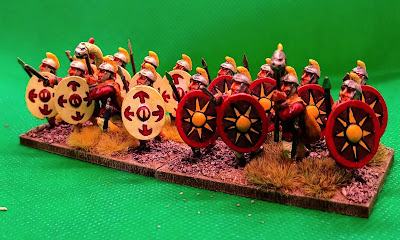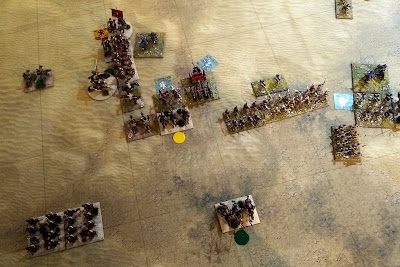Gaming highlights of the year were probably the Sharp Practice competition at Britcon especially as I hardly play any competition games now and Gary's wonderful AWI campaign against Dave's British together with rediscovering the 25/28mm scale.
Going into 2019 I have the following projects on the go:
- 28mm FoGR ECW Royalists/ Imperialists. I have most of the figures for this now but still need to paint two infantry regiments and two cavalry units minimum plus buy some suitable generals. This project has not made any progress for a while.
- 28mm Peninsular British for Sharp Practice. The first group for these should be done soon and I have all the figures. They'd give me another option if I enter more competitions.
- 28mm Blitzkreig Germans for CoC. Part of the 'Sealion' project I've bought enough infantry for a minimum sized force plus a Panzer II. A trial figure has been painted but that's all to date.
- 15mm Early Napoleonic Prussians for Blucher. These are Essex figures, around 1/3 of the army is painted and I have the figures for another 1/3. These have not progressed in quite a while now which is a shame as the ones I have done look nice.
- 28mm Woodland Indians for Sharp Practice. These are the remnants of the figures I bought to supplement my AWI armies when I first started playing Sharp Practice.
Potential new projects I've been considering:
- 10mm Late War Germans for Rommel. Having finished the Americans it would be nice to have an opponent for them. I did have some 10mm Germans but in an unfortunate error of judgement sold them just before I started playing Rommel thinking I'd only be using 3mm armies! This will probably go ahead especially as they will be quick to paint.
- Adding some new cavalry and perhaps some barbarian infantry to the refurbished 28mm Late Roman army.
- An army for Dragon Rampant, several club mates play this and think they are decent rules, however I keep telling myself I do not need to start off a new ruleset and a new period!
- A 28mm Confederate army. I have an old 25mm Hinchliffe Union ACW army which I never played a game with and which has been stuck in the loft for years. Against this idea is the fact that I have considerable Union and Confederate armies in 15mm already!
If previous experience is anything to go by it will be interesting and amusing to see how what I actually do next year compares to the plans above!

























































